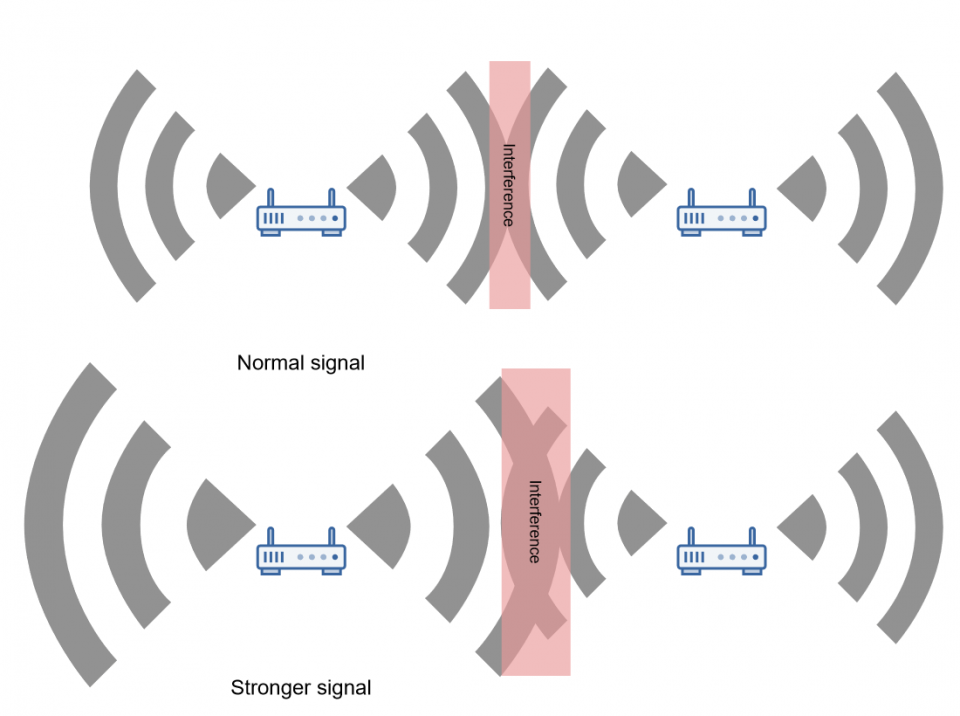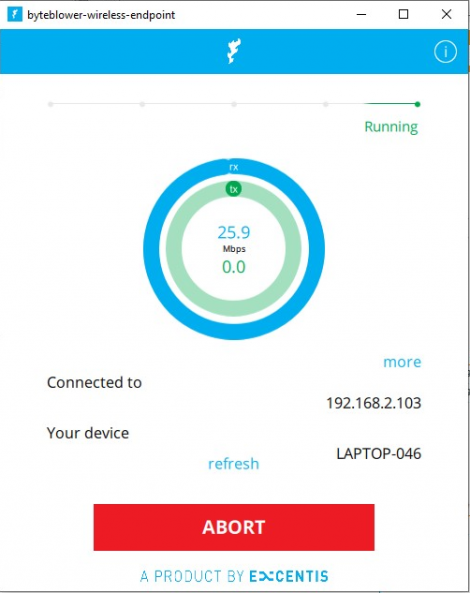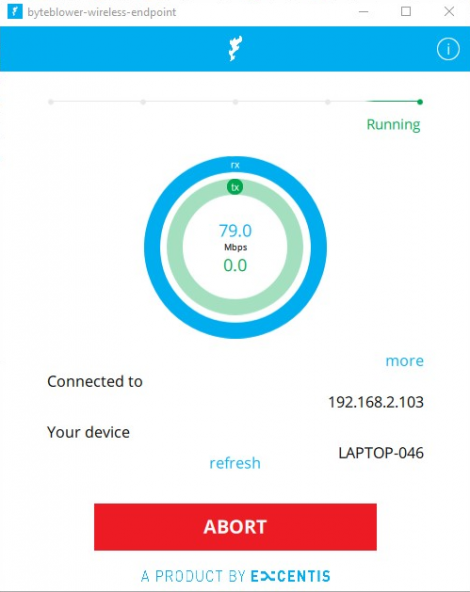Wi-Fi network tweak: minimize power to maximize performance

The COVID-19 pandemic is forcing many people to work from home, causing a tremendous increase in data flows on access networks. This huge reliance on home internet services creates new challenges for Wi-Fi networks, especially in urban locations. In these locations, interference between overlapping networks was already an issue – and now, more than ever. So, how can you limit this effect?
Let’s start with some Wi-Fi basics: the basis for a good Wi-Fi network experience is a robust signal. Your Wi-Fi-enabled device will select the strongest signal over weaker ones. So, a logical way to improve the Wi-Fi signal would be to increase the transmission power of your Wi-Fi access point to ensure that it is “louder” than those of nearby access points.
When networks shout to be heard…
But if your neighbours follow suit and boost the signals of their own access points, network interference will occur on a larger scale, further impacting the Wi-Fi experience, as illustrated below:
In the upper figure, both access points are transmitting at ‘normal’ power. The red region highlights the location where the interference is the highest, causing slowdowns for users.
If the owner of the first access point decides to increase transmit power as shown in the lower figure, it will potentially create a larger region of high interference, decreasing network performance for the second user. If that user responds by upping the transmit power of his access point, the situation simply escalates.
The benefits of toning down 2.4 GHz channels
Network performance is impacted by both clients and access point settings. As many tests in our Wi-Fi house have shown, the influence of client behaviour on networks can be significant. In this post, we focus on what you can do to tweak the performance of your access point, but the result will be impacted by what choices customers make.
While different approaches exist, the one offering the biggest gain is to lower the power on 2.4 GHz channels. This leads to three key effects.
Less interference, more access points needed
As signals in 2.4 GHz frequencies propagate farther than 5 GHz signals, interference is a bigger problem on those channels. Lowering power will reduce the issue, but may create the need for additional access points in some locations.
Clients are “steered” toward lower-interference frequencies
Reducing the power on 2.4 GHz frequencies may trigger many clients to move to the 5 GHz frequency, improving network performance – even in less-populated areas. 5 GHz frequencies cause less interference and offer greater bandwidth, and thus higher bitrates. As we discussed in our previous blog post, you can also force access points to ignore clients below a certain signal strength threshold. This is also what ‘band steering‘ does when enabled.
Add another access point on the weakest spots
An additional access point will most likely also offer an additional 5 GHz channel, providing a better 5 GHz coverage and better performance.
Putting the approach into action
We tested this approach in our own environment using our ByteBlower WEP application, with all channels fully powered as shown in the graph below. Our setup contains 15 wireless clients. We will focus on the effect on one of our clients with a signal strength around -65dBm.
The initial throughput on our client when active on a 2.4 Ghz frequency was around 30 Mbps, as shown here:

When we lowered power on our 2.4 GHz channels, we observed more clients connecting to our 5 GHz channel. The client we were testing also moved to a 5 Ghz frequency. Network performance and customer experience also improved, as shown below. The average throughput went from 30 Mbps to around 80 Mbps! We also see a much lower TCP round trip time.

On the ByteBlower WEP application, the result would look like this: Left you see the original result, at the right the result when lowering the power level on the 2.4 GHz channels.
Before the change: 25 Mbps

After the change: 80 Mbps

Summing things up
We’ve shown in our experiments that tweaking your access point settings to reduce signal strength – and thus interference – changes client behaviour. Instead of using 2.4 GHz channels, they opt for 5 GHz channels, improving network performance and boosting the user experience. However, you may need to add an access point in specific locations to ensure high-quality network access for all customers.
Would you like to gain more insights into how to improve network performance and offer even better customer service? We offer high-quality testing environments for a wide range of different experiments and setups. Get in touch with our experienced team for more details.
Interested in receiving tips and insights from our experts on network performance directly in your mailbox? Sign up for our newsletter

























it makes sense ! but what about Roaming service ?? if you want assume good quality for Audio / video